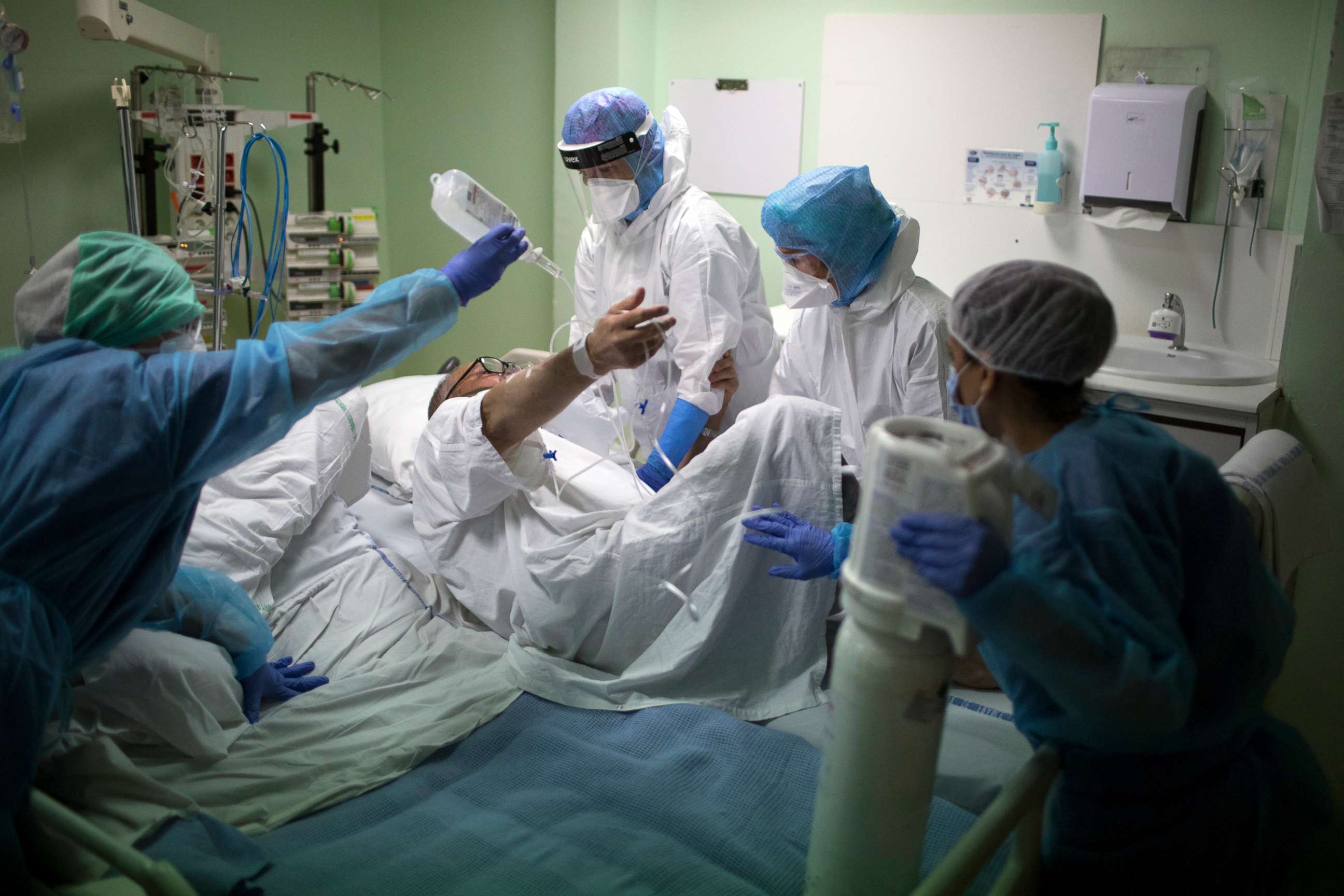Watching Europe's second wave roll in from a French ICU: Reporters Notebook
Hospitals here are bracing for the worst.
Lyon, France -- I've seen the impact COVID has had in countries all over the world. But this was the first time I was able to go into an intensive care unit and see for myself those clinging to life.
Eight months into this pandemic, it's easy to forget that people are still getting very sick. In Lyon, at the Centre Hospitalier Saint-Joseph et Saint-Luc in France, the ICU recently hits 65% of capacity with COVID cases and has had to release more beds. Non-emergency surgery has been suspended yet again.
As with the rest of the world, surging COVID cases here are primarily among the young -- France had 52,000 in one day on Oct. 26. They are seeing what the rest of Europe fears: cases turning into hospital admissions, and then deaths.
The virus is moving once again from the young to the elderly and, as with other European countries, deaths are climbing.
In room after room, we saw patients on ventilators, wires and tubes linked up to machines keeping them alive. We saw one lady having a coughing fit -- her hands bouncing on her chest as she gasped for air. One difference this time around seems to be patient ages: those admitted to this hospital are older than they were in the spring, with more serious existing conditions.

Cardiologist Dr. Lisa Green told me they are preparing as best they can for what may be coming down the line. "We don't know; we can't predict what the second wave is going to be like. We don't know how long it's going to be; how intense it's going to be. We're at the beginning, really, of the curve, but definitely it's an ascending curve."
A worrying time -- but they've also learned some valuable lessons and have changed how patients are treated, meaning a far better success rate.
Green explained the difference in organization this time around.
"We've got a specific medical COVID ward, but we've also opened small sectors in specialty departments," said Green. "For example, I work in the cardiology department, and we've opened two beds for COVID patients that come in with a primary cardiological pathology as well as a positive PCR. So instead of these patients going into the medical COVID wards, they come into the cardiology department and they have better care management."
New quick tests also help -- they allow for a result in 20 minutes rather than 48 hours, meaning patients are treated much more quickly than they were in the spring. We also saw much less PPE in the ICU -- the head of the unit told us they know more about how the virus is transmitted and it means his staff aren't wasting valuable time with repeated changes and becoming exhausted with restricted breathing. And, of course, those all-important steroids that improve care immeasurably are being used here to great effect.
The debate about whether further lockdowns are necessary continues to rage -- a "tide" may be more manageable for health services than a "wave" -- but this hospital is preparing itself for the long haul.
Above all, says Green, the virus has not changed -- these doctors may know more about it, but it is still as serious as ever. In a year like no other, this virus may yet have more surprises.



